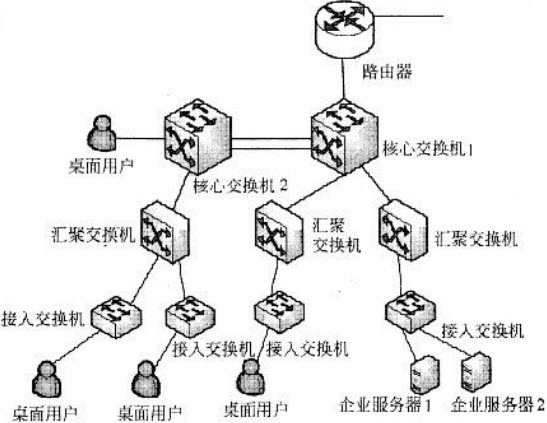
创建自己的小题库
搜索
【单选题】


(3)处应填()。
A.jobs
B.processes
C.programs
D.users
A.
transport layer protocol usually has several responsibilities.One is to create a process-to-process communication;UDP uses (1) numbers to accomplish this.Another responsibility is to provide control mechanisms at the transport level.UDP does this task at a very minimal level.There is no flow control mechanism and there is no(2) for received packet.UDP, however, does provide error control to some extent.If UDP detects an error in the received packet,it will silently drop it. The transport layer also provides a connection mechanism for the processes.The (3) must be able to send streams of data to the transport layer.It is the responsibility of the transport layer at (4) station to make the connection with the receiver, chop the stream into transportable units,number them,and send them one by one.It is the responsibility of the transport layer at the receiving end to wait until all the different units belonging to the same process have arrived,check and pass those that are (5) free, and deliver them to the receiving process as a stream.

 分享
分享
 反馈
反馈 收藏
收藏 举报
举报参考答案:


举一反三
【单选题】(7)处应填()。 A.多对多的联系在向关系模型转换时必须 B.多对多的联系在向关系模型转换时无须 C.只需要将一端的码并入多端,所以无须 D.不仅需要将一端的码并入多端,而且必须
A.
某企业工程项目管理数据库的部分关系模式如下图所示,其中带实下划线的表示主键,虚下划线的表示外键
B.


C.
其中供应关系是(5)的联系。若一个工程项目可以有多个员工参加,每个员工可以参加多个项目,则项目和员工之间是(6)联系。对项目和员工关系进行设计时,(7)设计成一个独立的关系模式。
【单选题】(27)处应填()。 A.数据驱动 B.模型驱动 C.用例驱动 D.状态驱动
A.
RUP是一个二维的软件开发模型,其核心特点之一是 (27) 。RUP将软件开发生存周期划分为多个循环(cycle),每个循环由4个连续的阶段组成,每个阶段完成确定的任务。设计及确定系统的体系结构,制定工作计划及资源要求是在 (28) 阶段完成的。
【单选题】(72)处应填()。 A.database design specifications B.database organization decisions C.data structure specifications D.data distribution decisions
A.
Information systems design is defined as those tasks that focus on the specification of a detailed computer-based solution. Typically, there are four systems design tasks for in-house development.
B.
1) The first task is to specify (71) ,which defines the technologies to be used by one, more, or all information systems in terms of their data, processes, interfaces, and network components. This task is accomplished by analyzing the data models and process models that are initially created during requirements analys16.
C.
2) The next systems design task is to develop the (72) . The purpose of this task is to prepare technical design specifications for a database that will be adaptable to future requirements and expansion.
D.
3) Once the database prototype has been built, the systems designer can work closely with system users to develop input, output and dialogue specifications. The (73) must be specified to ensure that the outputs are not lost, misrouted, misused, or incomplete.
E.
4) The fourth design task involves packaging all the specifications from the previous design tasks into a set of specifications that will guide the (74) activities during the following phases of the systems development methodology.
F.
Finally, we should (75) and update the project plan accordingly. The key deliverable should include a detailed plan for the construction phase that should follow.
【单选题】(58)处应填()。 A.心跳机制 B.数据驱动 C.关注点分离 D.信息隐藏
A.
软件质量属性通常需要采用特定的设计策略实现。例如, (58) 设计策略能提高该系统的可用性, (59) 设计策略能够提高该系统的性能, (60) 设计策略能够提高该系统的安全性。
【单选题】(1)处应填()。 A.网络IP 地址分配方案 B.设备列表清单 C.集中访谈的信息资料 D.网络内部的通信流量分布
A.
网络设计过程包括逻辑网络设计和物理网络设计两个阶段,各个阶段都要产生相应的文档,以下选项中,(1)属于逻辑网络设计文档,(2)属于物理网络设计文档。
【单选题】(35)处应填()。 A.元数据模型 B.数据库模型 C.数据仓库模型 D.组织架构模型
A.
企业战略数据模型可分为两种类型: (35) 描述日常事务处理中的数据及其关系; (36) 描述企业管理决策者所需信息及其关系。
【单选题】(2)处应填()。 A.网络IP 地址分配方案 B.设备列表清单 C.集中访谈的信息资料 D.网络内部的通信流量分布
A.
网络设计过程包括逻辑网络设计和物理网络设计两个阶段,各个阶段都要产生相应的文档,以下选项中,(1)属于逻辑网络设计文档,(2)属于物理网络设计文档。
【单选题】MPLS技术主要是为了提高路由器转发速率而提出的,其核心思想是利用标签交换取代复杂的路由运算和路由交换;该技术实现的核心就是把()封装在()数据包。 第一空为()。 MPLS技术主要是为了提高路由器转发速率而提出的,其核心思想是利用标签交换取代复杂的路由运算和路由交换;该技术实现的核心就是把()封装在()数据包。 第一空为()。 A.IP数据报 B.MPLS C.TCP D.GRE
A.
【说明】
B.
某企业欲构建局域网,考虑到企业的很多业务依托于网络,要求企业内部用户能够高速的访问企业服务器,并且对网络的可靠性要求很高。因此,在网络的设计中,要考虑网络的冗余性,不能因为单点故障引起整个网络的瘫痪。
C.
某网络公司根据企业需求,将网络拓扑结构设计为双核心来进行负载均衡,当其中一个核心交换机出现故障时,数据能够转换到另一台交换机上,起到冗余备份的作用。该公司给出的网络拓扑如图1-1所示。
D.


【单选题】(4)处应填()。 A.P(S3)和V(S4)V(S5) B.P(S3)和P(S4)P(S5) C.V(S3)和V(S4)V(S5) D.V(S3)和P(S4)P(S5)
A.
●进程Pl、P2、P3、P4 和P5 的前趋图如下:
B.


C.
若用PV 操作控制进程P1~P5 并发执行的过程,则需要设置5 个信号量S1、S2、S3、S4和S5,进程间同步所使用的信号量标注在上图中的边上,且信号量S1~S5 的初值都等于零,初始状态下进程P1 开始执行。下图中a、b 和c 处应分别填写(2);d 和e 处应分别填写(3),f和g 处应分别填写(4)。
D.



相关题目:
【单选题】(7)处应填()。 A.多对多的联系在向关系模型转换时必须 B.多对多的联系在向关系模型转换时无须 C.只需要将一端的码并入多端,所以无须 D.不仅需要将一端的码并入多端,而且必须
A.
某企业工程项目管理数据库的部分关系模式如下图所示,其中带实下划线的表示主键,虚下划线的表示外键
B.


C.
其中供应关系是(5)的联系。若一个工程项目可以有多个员工参加,每个员工可以参加多个项目,则项目和员工之间是(6)联系。对项目和员工关系进行设计时,(7)设计成一个独立的关系模式。
【单选题】(27)处应填()。 A.数据驱动 B.模型驱动 C.用例驱动 D.状态驱动
A.
RUP是一个二维的软件开发模型,其核心特点之一是 (27) 。RUP将软件开发生存周期划分为多个循环(cycle),每个循环由4个连续的阶段组成,每个阶段完成确定的任务。设计及确定系统的体系结构,制定工作计划及资源要求是在 (28) 阶段完成的。
【单选题】(72)处应填()。 A.database design specifications B.database organization decisions C.data structure specifications D.data distribution decisions
A.
Information systems design is defined as those tasks that focus on the specification of a detailed computer-based solution. Typically, there are four systems design tasks for in-house development.
B.
1) The first task is to specify (71) ,which defines the technologies to be used by one, more, or all information systems in terms of their data, processes, interfaces, and network components. This task is accomplished by analyzing the data models and process models that are initially created during requirements analys16.
C.
2) The next systems design task is to develop the (72) . The purpose of this task is to prepare technical design specifications for a database that will be adaptable to future requirements and expansion.
D.
3) Once the database prototype has been built, the systems designer can work closely with system users to develop input, output and dialogue specifications. The (73) must be specified to ensure that the outputs are not lost, misrouted, misused, or incomplete.
E.
4) The fourth design task involves packaging all the specifications from the previous design tasks into a set of specifications that will guide the (74) activities during the following phases of the systems development methodology.
F.
Finally, we should (75) and update the project plan accordingly. The key deliverable should include a detailed plan for the construction phase that should follow.
【单选题】(58)处应填()。 A.心跳机制 B.数据驱动 C.关注点分离 D.信息隐藏
A.
软件质量属性通常需要采用特定的设计策略实现。例如, (58) 设计策略能提高该系统的可用性, (59) 设计策略能够提高该系统的性能, (60) 设计策略能够提高该系统的安全性。
【单选题】(1)处应填()。 A.网络IP 地址分配方案 B.设备列表清单 C.集中访谈的信息资料 D.网络内部的通信流量分布
A.
网络设计过程包括逻辑网络设计和物理网络设计两个阶段,各个阶段都要产生相应的文档,以下选项中,(1)属于逻辑网络设计文档,(2)属于物理网络设计文档。
【单选题】(35)处应填()。 A.元数据模型 B.数据库模型 C.数据仓库模型 D.组织架构模型
A.
企业战略数据模型可分为两种类型: (35) 描述日常事务处理中的数据及其关系; (36) 描述企业管理决策者所需信息及其关系。
【单选题】(2)处应填()。 A.网络IP 地址分配方案 B.设备列表清单 C.集中访谈的信息资料 D.网络内部的通信流量分布
A.
网络设计过程包括逻辑网络设计和物理网络设计两个阶段,各个阶段都要产生相应的文档,以下选项中,(1)属于逻辑网络设计文档,(2)属于物理网络设计文档。
【单选题】MPLS技术主要是为了提高路由器转发速率而提出的,其核心思想是利用标签交换取代复杂的路由运算和路由交换;该技术实现的核心就是把()封装在()数据包。 第一空为()。 MPLS技术主要是为了提高路由器转发速率而提出的,其核心思想是利用标签交换取代复杂的路由运算和路由交换;该技术实现的核心就是把()封装在()数据包。 第一空为()。 A.IP数据报 B.MPLS C.TCP D.GRE
A.
【说明】
B.
某企业欲构建局域网,考虑到企业的很多业务依托于网络,要求企业内部用户能够高速的访问企业服务器,并且对网络的可靠性要求很高。因此,在网络的设计中,要考虑网络的冗余性,不能因为单点故障引起整个网络的瘫痪。
C.
某网络公司根据企业需求,将网络拓扑结构设计为双核心来进行负载均衡,当其中一个核心交换机出现故障时,数据能够转换到另一台交换机上,起到冗余备份的作用。该公司给出的网络拓扑如图1-1所示。
D.


【单选题】(4)处应填()。 A.P(S3)和V(S4)V(S5) B.P(S3)和P(S4)P(S5) C.V(S3)和V(S4)V(S5) D.V(S3)和P(S4)P(S5)
A.
●进程Pl、P2、P3、P4 和P5 的前趋图如下:
B.


C.
若用PV 操作控制进程P1~P5 并发执行的过程,则需要设置5 个信号量S1、S2、S3、S4和S5,进程间同步所使用的信号量标注在上图中的边上,且信号量S1~S5 的初值都等于零,初始状态下进程P1 开始执行。下图中a、b 和c 处应分别填写(2);d 和e 处应分别填写(3),f和g 处应分别填写(4)。
D.



参考解析:


AI解析
重新生成

题目纠错 0
发布

 复制链接
复制链接 新浪微博
新浪微博 分享QQ
分享QQ 微信扫一扫
微信扫一扫





